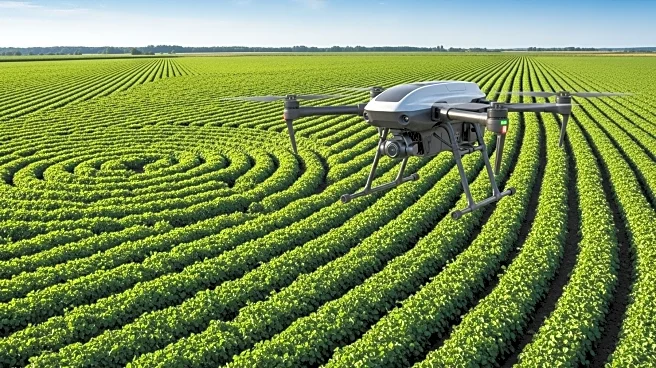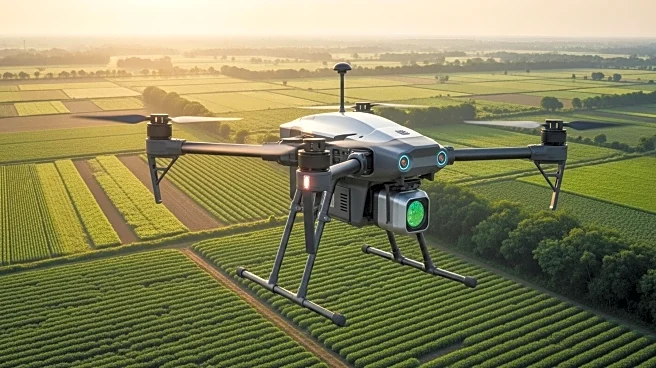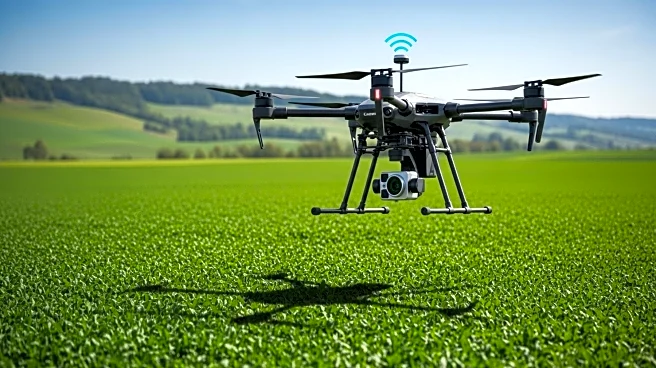What's Happening?
The precision farming market is expected to grow significantly, with projections indicating an increase from $11.38 billion in 2025 to $21.45 billion by 2032, at a compound annual growth rate (CAGR) of 9.5%. This growth is driven by factors such as rising global food demand, climate change, and the need for sustainable agriculture. The integration of technologies like IoT, AI, and blockchain is enhancing farm productivity through real-time data, predictive analytics, and transparent supply chains. Key applications include variable rate application, yield monitoring, and livestock tracking. While developed urban regions readily adopt these technologies due to advanced infrastructure, rural areas face challenges like connectivity gaps. However, improving digital infrastructure and government initiatives are narrowing this divide.
Why It's Important?
The expansion of the precision farming market is crucial for addressing global food security and sustainability challenges. By leveraging advanced technologies, farmers can optimize resource use, reduce environmental impact, and increase crop yields. This market growth presents significant opportunities for technology providers and agricultural stakeholders to innovate and expand their offerings. As precision farming becomes more widespread, it could lead to more efficient agricultural practices, reduced waste, and improved food production, benefiting both producers and consumers.
What's Next?
Future growth in the precision farming market is expected to stem from AI-powered automation, drone-based monitoring, and expanding data-driven farming solutions tailored for smallholder farmers. As digital infrastructure improves and government initiatives continue to support technology adoption, more rural areas may overcome connectivity challenges, further driving market expansion.
Beyond the Headlines
The ethical and cultural dimensions of precision farming involve balancing technological advancements with traditional farming practices. As technology becomes more integrated into agriculture, there may be shifts in labor dynamics and rural economies, requiring careful management to ensure equitable benefits.











